Abstract
The 51Cr-release test was used to detect cytotoxic antibodies in adult rabbits bearing tumors induced by Shope fibroma virus. The following are the recommended experimental conditions: the infection of RK-13 cells with a multiplicity of 1 to 2 infectious units per cell for 48 hr, 51Cr labeling of infected cells during the last 12 hr of incubation, sensitization of suspended labeled infected cells for 1 hr with immune serum, and quantitation of cell damage by the amount of 51Cr released after 6 hr of incubation in the presence of complement. The immune sera reacted only with fibroma virus-infected cells but not with cells infected with vaccinia virus or herpesvirus type 1. Similarly, sera prepared against vaccinia virus and herpesvirus type 1 were not cytotoxic to fibroma virus-infected cells, although they were cytotoxic to cells infected with homologous viruses. The total antibody activity in sera of rabbits infected with Shope fibroma virus was detected first on day 7, gradually rose to its peak by day 23, and persisted at that level for at least 50 days. The 19S antibody was detected on day 7, reached peak titers by day 13, and disappeared by day 17. The 7S antibody was barely detectable on day 7, reached maximum titers on day 13, and remained high for at least 50 days. The tumors appeared on the 3rd day after virus inoculation, reached maximum size on day 13, and regressed completely by day 23.
Full text
PDF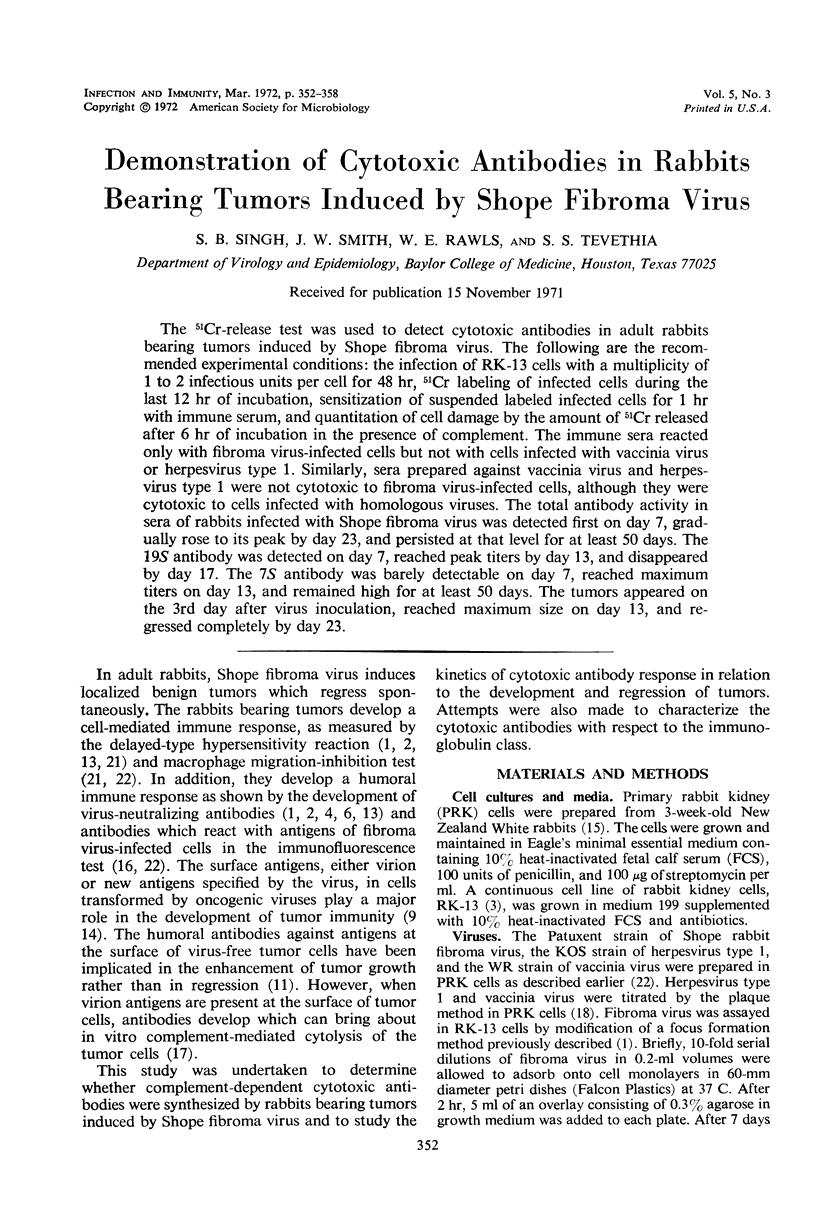
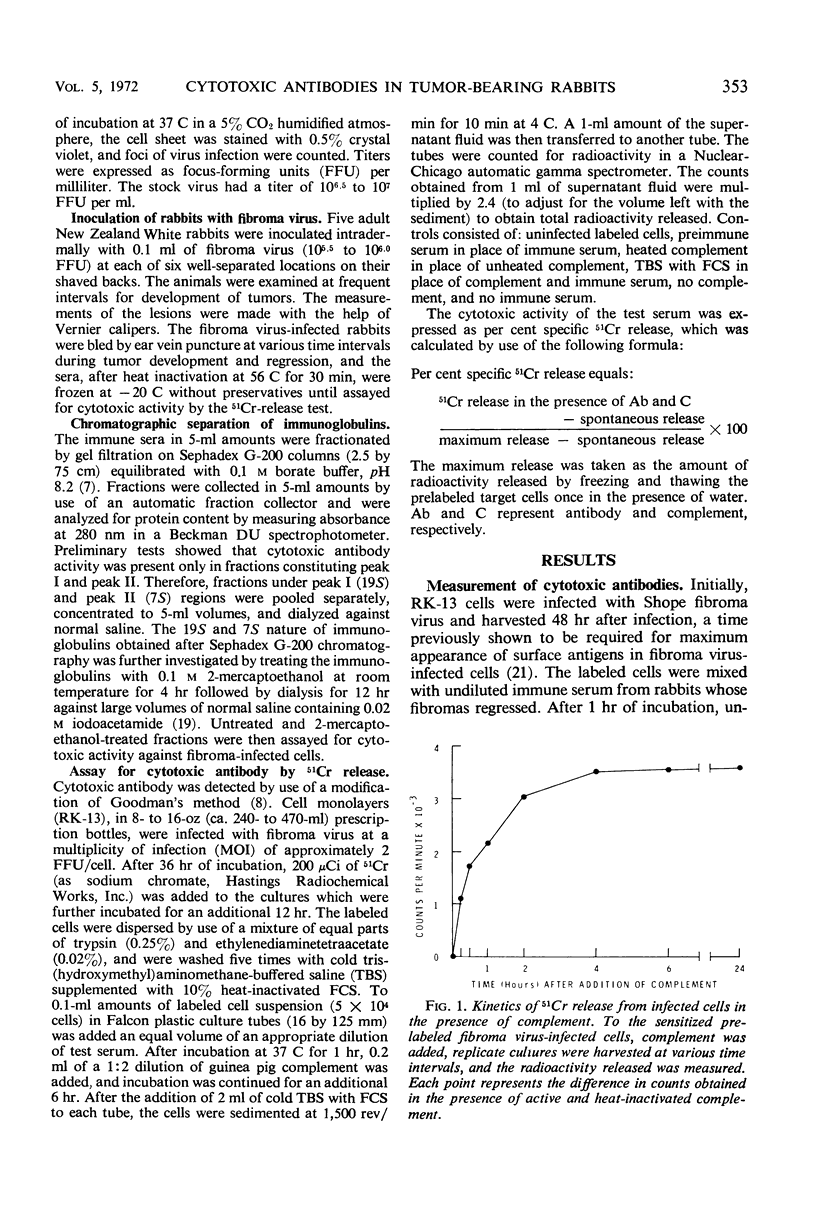
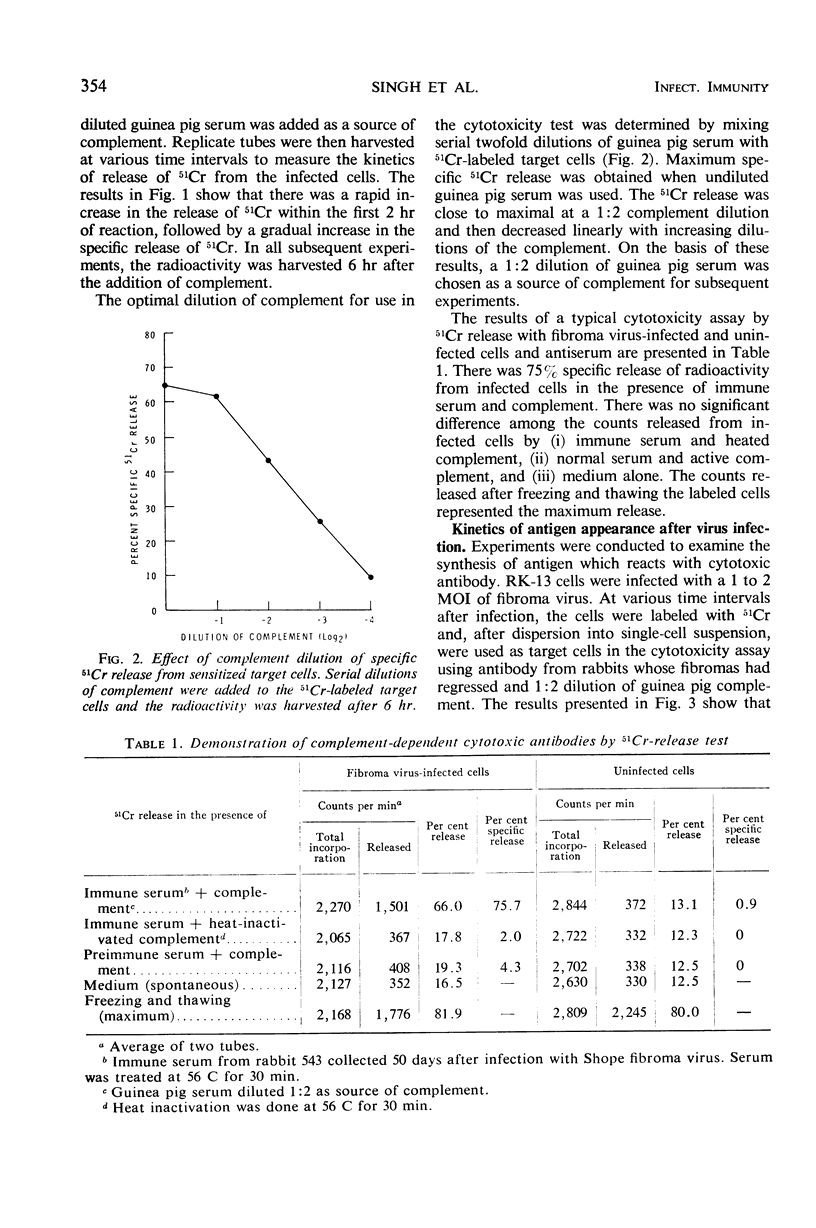
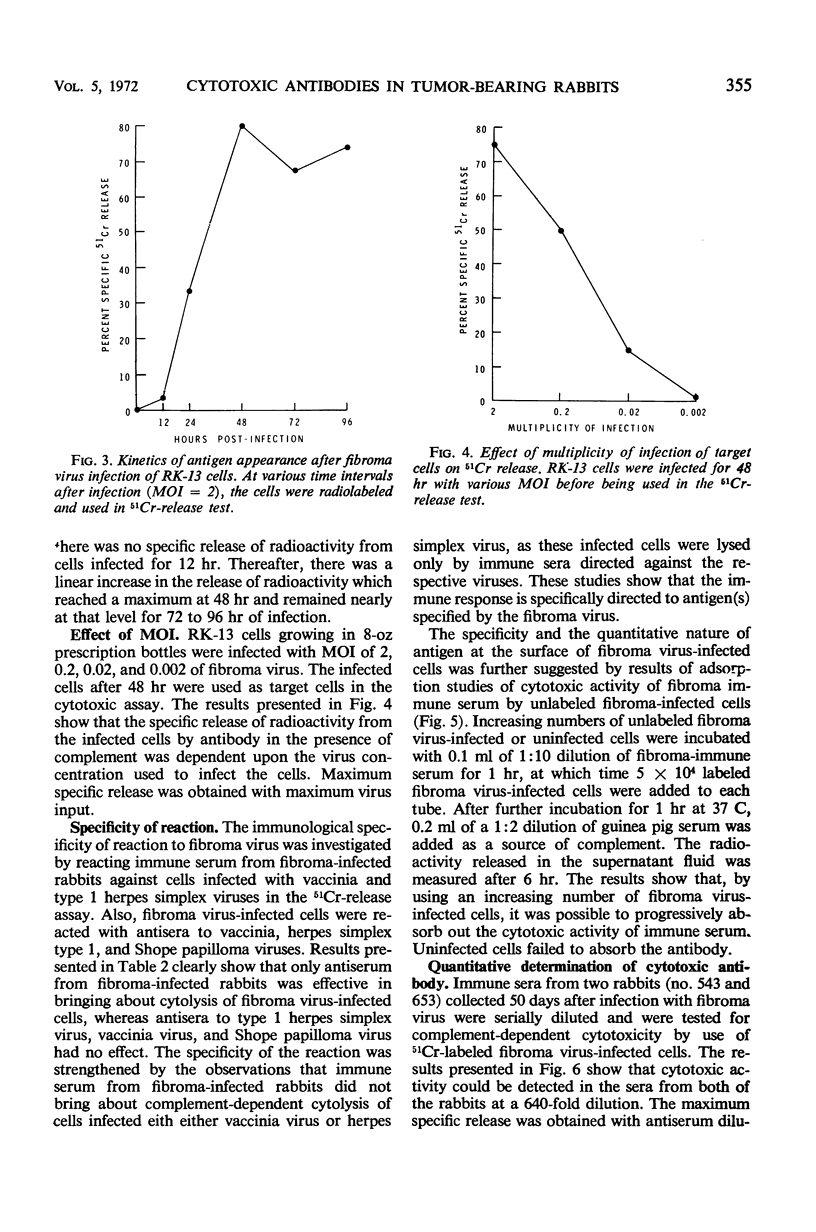
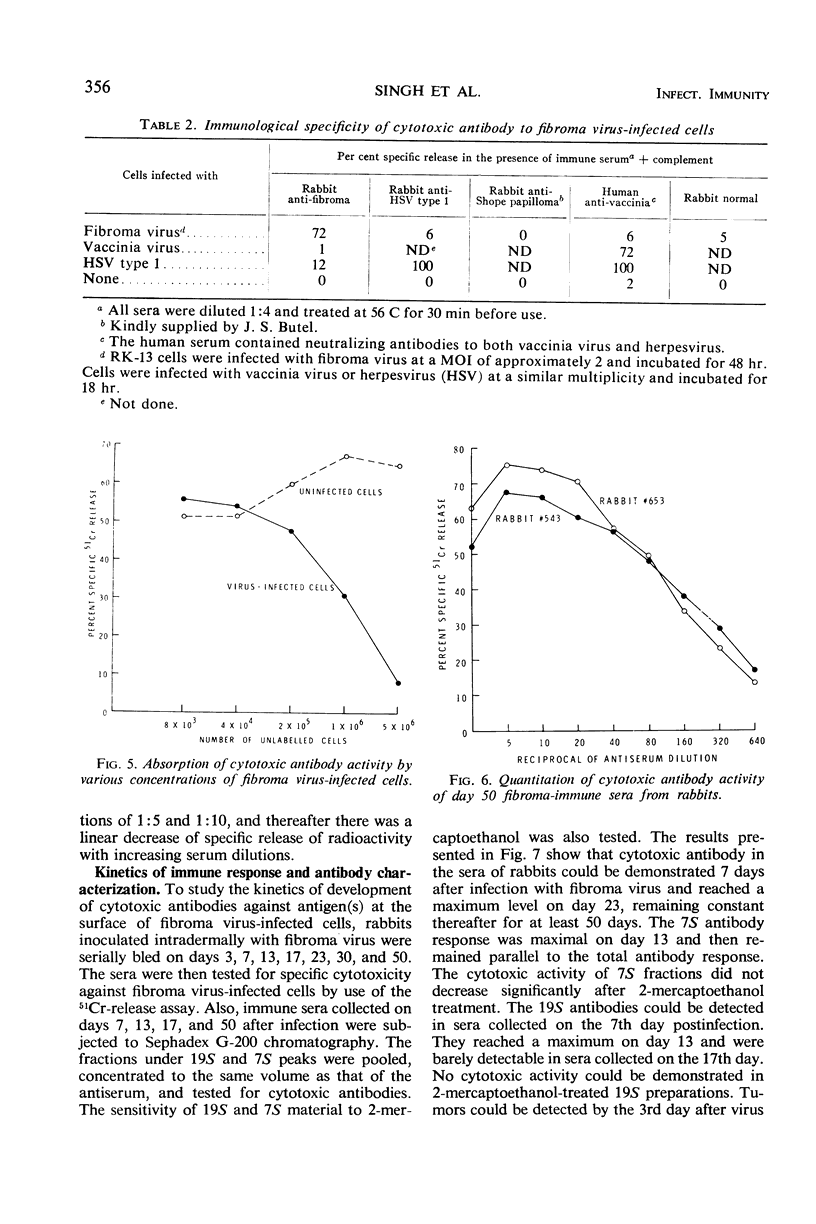
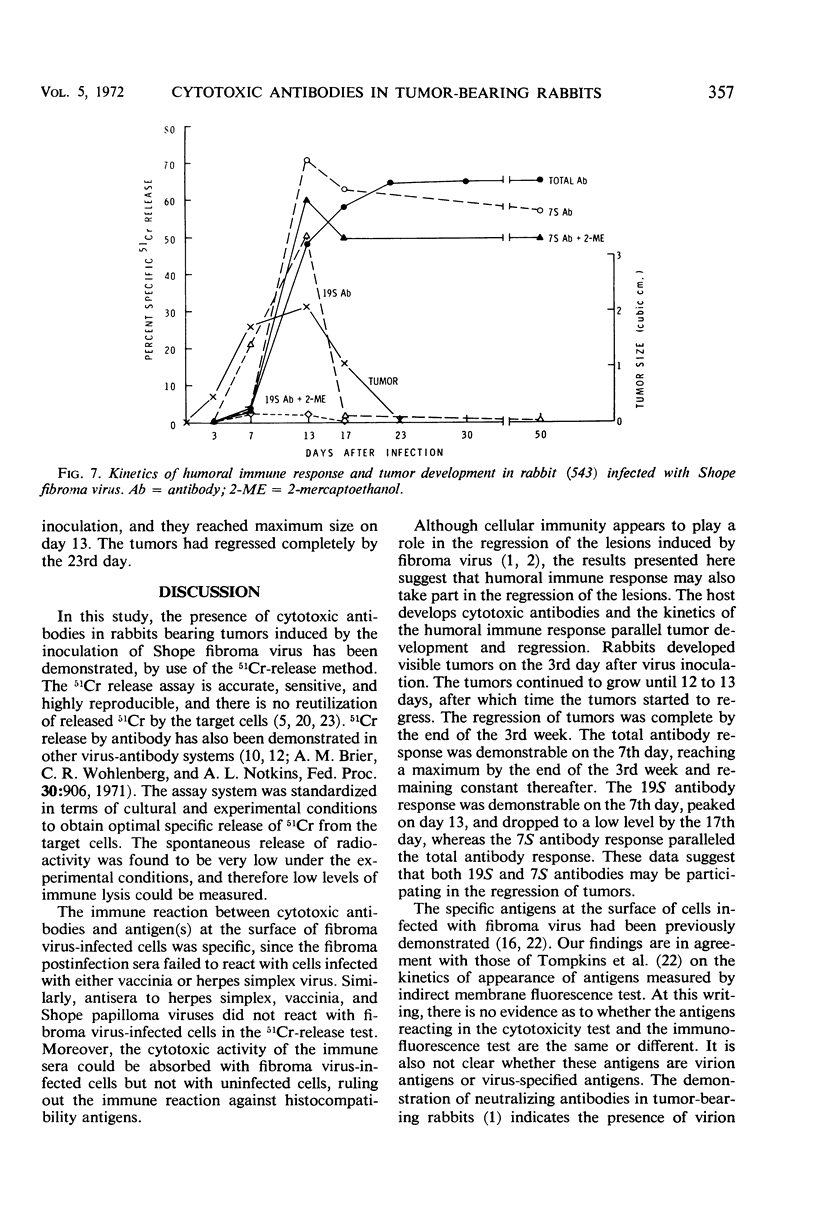
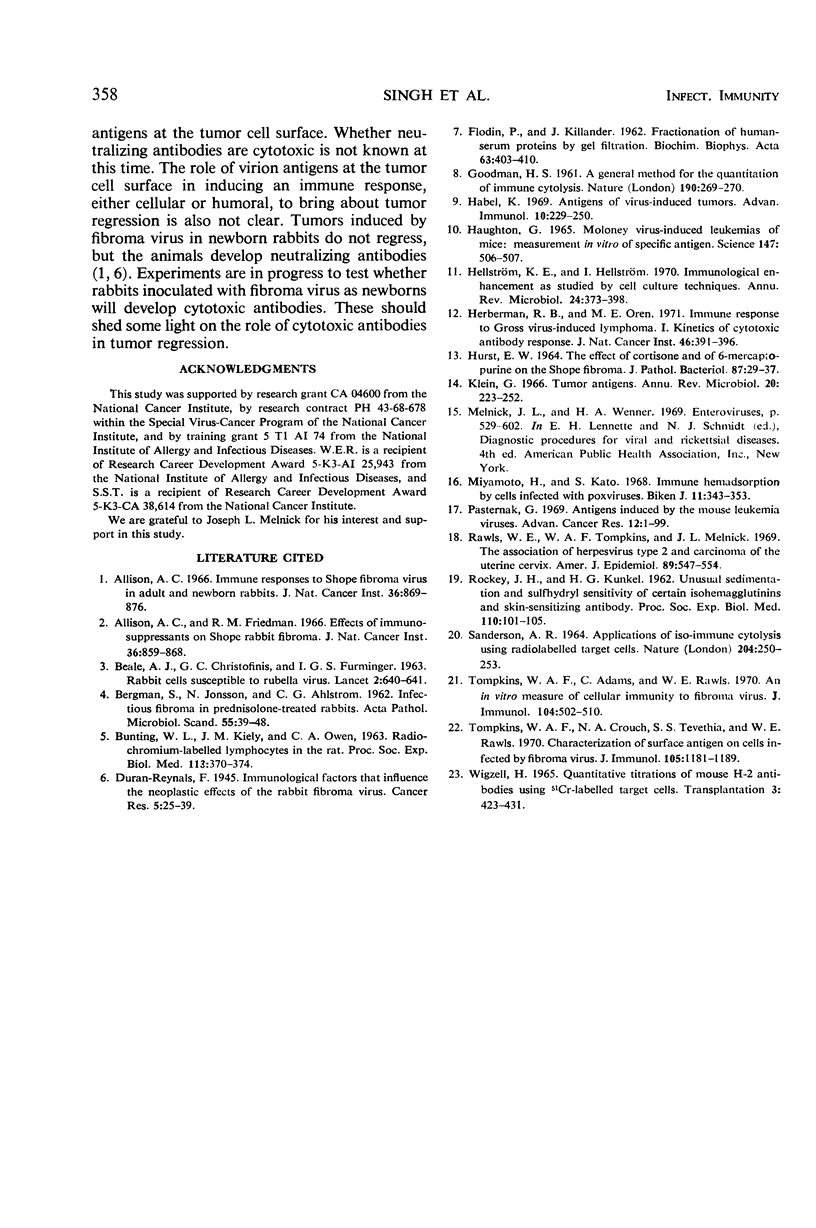
Selected References
These references are in PubMed. This may not be the complete list of references from this article.
- BUNTING W. L., KIELY J. M., OWEN C. A., Jr Radiochromiumlabeled lymphocytes in the rat. Proc Soc Exp Biol Med. 1963 Jun;113:370–374. [PubMed] [Google Scholar]
- FLODIN P., KILLANDER J. Fractionation of human-serum proteins by gel filtration. Biochim Biophys Acta. 1962 Oct 8;63:402–410. doi: 10.1016/0006-3002(62)90104-x. [DOI] [PubMed] [Google Scholar]
- GOODMAN H. S. A general method for the quantitation of immune cyotysis. Nature. 1961 Apr 15;190:269–270. doi: 10.1038/190269a0. [DOI] [PubMed] [Google Scholar]
- HAUGHTON G. MOLONEY VIRUS-INDUCED LEUKEMIAS OF MICE: MEASUREMENT IN VITRO OF SPECIFIC ANTIGEN. Science. 1965 Jan 29;147(3657):506–507. doi: 10.1126/science.147.3657.506. [DOI] [PubMed] [Google Scholar]
- HURST E. W. THE EFFECT OF CORTISONE AND OF 6-MERCAPTOPURINE ON THE SHOPE FIBROMA. J Pathol Bacteriol. 1964 Jan;87:29–37. doi: 10.1002/path.1700870105. [DOI] [PubMed] [Google Scholar]
- Habel K. Antigens of virus-induced tumors. Adv Immunol. 1969;10:229–250. doi: 10.1016/s0065-2776(08)60418-6. [DOI] [PubMed] [Google Scholar]
- Hellström K. E., Hellström I. Immunological enhancement as studied by cell culture techniques. Annu Rev Microbiol. 1970;24:373–398. doi: 10.1146/annurev.mi.24.100170.002105. [DOI] [PubMed] [Google Scholar]
- Herberman R. B., Oren M. E. Immune response to Gross virus-induced lymphoma. I. Kinetics of cytotoxic antibody response. J Natl Cancer Inst. 1971 Feb;46(2):391–396. [PubMed] [Google Scholar]
- Klein G. Tumor antigens. Annu Rev Microbiol. 1966;20:223–252. doi: 10.1146/annurev.mi.20.100166.001255. [DOI] [PubMed] [Google Scholar]
- Miyamoto H., Kato S. Immune hemadsorption by cells infected with poxviruses. Biken J. 1968 Dec;11(4):343–353. [PubMed] [Google Scholar]
- Pasternak G. Antigens induced by the mouse leukemia viruses. Adv Cancer Res. 1969;12:1–99. doi: 10.1016/s0065-230x(08)60328-0. [DOI] [PubMed] [Google Scholar]
- ROCKEY J. H., KUNKEL H. G. Unusual sedimentation and sulfhydryl sensitivity of certain isohemagglutinins and skin-sensitizing antibody. Proc Soc Exp Biol Med. 1962 May;110:101–105. doi: 10.3181/00379727-110-27437. [DOI] [PubMed] [Google Scholar]
- Rawls W. E., Tompkins W. A., Melnick J. L. The association of herpesvirus type 2 and carcinoma of the uterine cervix. Am J Epidemiol. 1969 May;89(5):547–554. doi: 10.1093/oxfordjournals.aje.a120967. [DOI] [PubMed] [Google Scholar]
- SANDERSON A. R. APPLICATIONS OF ISO-IMMUNE CYTOLYSIS USING RADIOLABELLED TARGET CELLS. Nature. 1964 Oct 17;204:250–253. doi: 10.1038/204250a0. [DOI] [PubMed] [Google Scholar]
- Tompkins W. A., Adams C., Rawls W. E. An in vitro measure of cellular immunity to fibroma virus. J Immunol. 1970 Feb;104(2):502–510. [PubMed] [Google Scholar]
- Tompkins W. A., Crouch N. A., Tevethia S. S., Rawls W. E. Characterization of surface antigen on cells infected by fibroma virus. J Immunol. 1970 Nov;105(5):1181–1189. [PubMed] [Google Scholar]
- WIGZELL H. QUANTITATIVE TITRATIONS OF MOUSE H-2 ANTIBODIES USING CR-51-LABELLED TARGET CELLS. Transplantation. 1965 May;3:423–431. doi: 10.1097/00007890-196505000-00011. [DOI] [PubMed] [Google Scholar]


